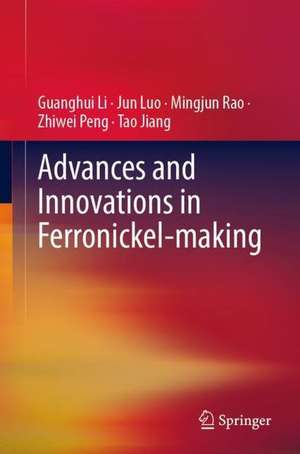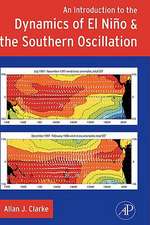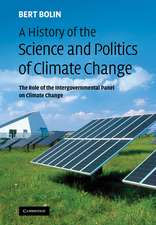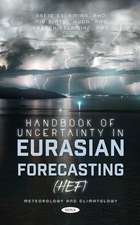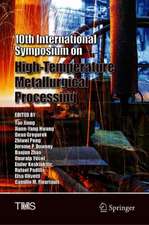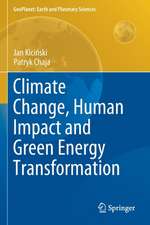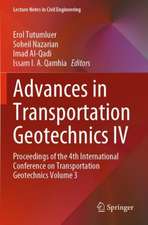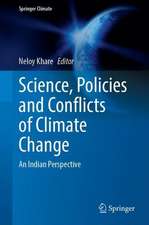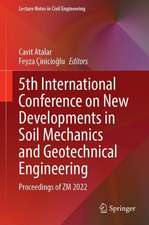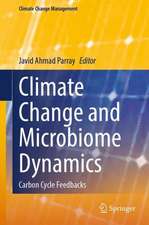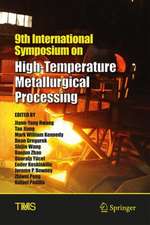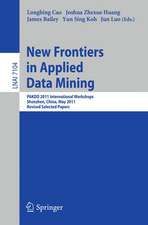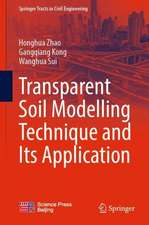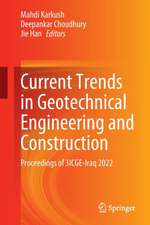Advances and Innovations in Ferronickel-Making
Autor Guanghui Li, Jun Luo, Mingjun Rao, Zhiwei Peng, Tao Jiangen Limba Engleză Hardback – 19 ian 2023
| Toate formatele și edițiile | Preț | Express |
|---|---|---|
| Paperback (1) | 1000.24 lei 6-8 săpt. | |
| Springer Nature Singapore – 20 ian 2024 | 1000.24 lei 6-8 săpt. | |
| Hardback (1) | 1008.12 lei 3-5 săpt. | |
| Springer Nature Singapore – 19 ian 2023 | 1008.12 lei 3-5 săpt. |
Preț: 1008.12 lei
Preț vechi: 1229.41 lei
-18% Nou
Puncte Express: 1512
Preț estimativ în valută:
192.93€ • 199.31$ • 160.56£
192.93€ • 199.31$ • 160.56£
Carte disponibilă
Livrare economică 05-19 martie
Preluare comenzi: 021 569.72.76
Specificații
ISBN-13: 9789811952265
ISBN-10: 9811952264
Pagini: 311
Ilustrații: XII, 311 p. 259 illus., 235 illus. in color.
Dimensiuni: 155 x 235 mm
Greutate: 0.68 kg
Ediția:1st ed. 2023
Editura: Springer Nature Singapore
Colecția Springer
Locul publicării:Singapore, Singapore
ISBN-10: 9811952264
Pagini: 311
Ilustrații: XII, 311 p. 259 illus., 235 illus. in color.
Dimensiuni: 155 x 235 mm
Greutate: 0.68 kg
Ediția:1st ed. 2023
Editura: Springer Nature Singapore
Colecția Springer
Locul publicării:Singapore, Singapore
Cuprins
An Overview of Nickel Utilization from Laterite Ores.- Fundamentals of Selective Solid-State Reduction and Novel Process for Preparing Ferronickel from Laterite Ores.- Technologies of Slag Formation Control in Electric Arc Furnace Smelting of Laterite Ores.- Softening-Melting Properties of Laterite Ore and their Regulation Technologies for the Krupp-Renn Process and Sintering Process.- Valorization of Ferronickel Slag for Preparing Refractory and Thermal Insulation Materials.- Recycling of Stainless-Steel Pickling Sludge Via RKEF Route.
Notă biografică
Guanghui Li is a professor in the School of Minerals Processing and Bioengineering at Central South University, China. He received his B.E., M.S., and Ph.D. degrees, all in Mineral Processing Engineering, from Central South University in 1996, 1999, and 2002, respectively. After completing his graduate study, he joined the Department of Ferrous Metallurgy of the school, and was promoted to lecturer, associate professor, and full professor in 2002, 2004, and 2010, respectively. Since 2018, he has been the vice dean of the school. Since 2020, he has been Specially Appointed Professor of Chang Jiang Scholar Program of China. His research interests include short process of utilization of complex iron ores, agglomeration and direct reduction of iron ores, efficient and clean utilization of solid wastes, extraction of rare and scattered metals, synthesis of functional mineral materials, and processing of low-grade aluminum- and silicon-bearing resources. He has published over 200 papers and 4 books and won two Second-Class Prizes of National Scientific and Technological Progress Award of China.
Tao Jiang is a professor in the School of Minerals Processing and Bioengineering at Central South University, China. He received his M.S. degree in 1986 and Ph.D. degree in 1990, both from Central South University of Technology. Then he joined the university and served as an assistant professor (1990–1992) and full professor (1992–now). From 2000 to 2003, he was a visiting scientist to the Department of Metallurgical Engineering, the University of Utah. He has been Specially Appointed Professor of Chang Jiang Scholar Program of China since 2008 and dean of the school from 2010 to 2018. His research interests include agglomeration and direct reduction of iron ores, and extraction of refractory gold ores. He has undertaken more than 50 projects from the government and industry, including the National Science Fund for Distinguished Young Scholars Program. He and co-workersinvented the direct reduction process of composite binder pellets and three plants were set up in China based on the invention. He proposed the innovative composite agglomeration process of iron ore fines, which was put into production in Baotou Steel Company, China. He has published 320 technical papers and 6 books. He holds 35 patents and has more than 30 conference presentations.
Mingjun Rao is an associate professor in the School of Minerals Processing and Bioengineering at Central South University, China. He received Ph.D. degree in metallurgical engineering and B.E. degree in mineral processing engineering from Central South University. He was a postdoctoral fellow in the laboratory of Prof. Il Sohn at Yonsei University, Korea, from 2015-2017. His research interests include extractive metallurgy of non-ferrous metals, utilization of metallurgical solid waste, and iron ore agglomeration. His doctoral dissertation was awarded as the Excellent Doctoral dissertation of HunanProvince in 2017. He won the Second-Class Prize of National Scientific and Technological Progress Award of China in 2019.
Jun Luo is a postdoctoral fellow in the School of Minerals Processing and Bioengineering at Central South University, China. He received his M.S. degree in metallurgical engineering in 2013 and his Ph.D. degree in mineral processing engineering from Central South University in 2017. His research interests include hydrometallurgical and pyrometallurgical processing of base metals from low-grade, complex, and refractory ores and secondary resources. He has published more than 20 papers and holds more than 10 Chinese patents.
Zhiwei Peng is a professor in the School of Minerals Processing and Bioengineering at Central South University, China. He received his B.E. and M.S. degrees from Central South University in 2005 and 2008, respectively, and his Ph.D. degree in Materials Science and Engineering from Michigan Technological University, USA, in 2012. His research interests include dielectric characterization, ferrous metallurgy, microwave processing, comprehensive utilization of resources, waste valorization, powder agglomeration, low-carbon technology, process simulation, electromagnetic shielding, and synthesis of functional materials. He has published over 170 papers and holds 56 Chinese patents. He has served as editor or editorial board member for 7 international journals and as a reviewer for more than 70 journals.
Tao Jiang is a professor in the School of Minerals Processing and Bioengineering at Central South University, China. He received his M.S. degree in 1986 and Ph.D. degree in 1990, both from Central South University of Technology. Then he joined the university and served as an assistant professor (1990–1992) and full professor (1992–now). From 2000 to 2003, he was a visiting scientist to the Department of Metallurgical Engineering, the University of Utah. He has been Specially Appointed Professor of Chang Jiang Scholar Program of China since 2008 and dean of the school from 2010 to 2018. His research interests include agglomeration and direct reduction of iron ores, and extraction of refractory gold ores. He has undertaken more than 50 projects from the government and industry, including the National Science Fund for Distinguished Young Scholars Program. He and co-workersinvented the direct reduction process of composite binder pellets and three plants were set up in China based on the invention. He proposed the innovative composite agglomeration process of iron ore fines, which was put into production in Baotou Steel Company, China. He has published 320 technical papers and 6 books. He holds 35 patents and has more than 30 conference presentations.
Mingjun Rao is an associate professor in the School of Minerals Processing and Bioengineering at Central South University, China. He received Ph.D. degree in metallurgical engineering and B.E. degree in mineral processing engineering from Central South University. He was a postdoctoral fellow in the laboratory of Prof. Il Sohn at Yonsei University, Korea, from 2015-2017. His research interests include extractive metallurgy of non-ferrous metals, utilization of metallurgical solid waste, and iron ore agglomeration. His doctoral dissertation was awarded as the Excellent Doctoral dissertation of HunanProvince in 2017. He won the Second-Class Prize of National Scientific and Technological Progress Award of China in 2019.
Jun Luo is a postdoctoral fellow in the School of Minerals Processing and Bioengineering at Central South University, China. He received his M.S. degree in metallurgical engineering in 2013 and his Ph.D. degree in mineral processing engineering from Central South University in 2017. His research interests include hydrometallurgical and pyrometallurgical processing of base metals from low-grade, complex, and refractory ores and secondary resources. He has published more than 20 papers and holds more than 10 Chinese patents.
Zhiwei Peng is a professor in the School of Minerals Processing and Bioengineering at Central South University, China. He received his B.E. and M.S. degrees from Central South University in 2005 and 2008, respectively, and his Ph.D. degree in Materials Science and Engineering from Michigan Technological University, USA, in 2012. His research interests include dielectric characterization, ferrous metallurgy, microwave processing, comprehensive utilization of resources, waste valorization, powder agglomeration, low-carbon technology, process simulation, electromagnetic shielding, and synthesis of functional materials. He has published over 170 papers and holds 56 Chinese patents. He has served as editor or editorial board member for 7 international journals and as a reviewer for more than 70 journals.
Textul de pe ultima copertă
This book introduces the most inspiring progress in the production of ferronickel from laterite ores, from both theoretical and technological perspectives. Based on a detailed overview of nickel utilization from laterite ores, it provides the advances of four main methods for laterite ore processing, including the solid-sate reduction-magnetic separation process, the rotary kiln reduction-electric arc furnace smelting process, the Krupp-Renn process, and the sintering-blast furnace smelting process. Moreover, for mediating the adverse impacts of the byproducts in ferronickel and subsequent stainless-steel making, it presents pioneering technologies of utilization of ferronickel slag for producing value-added functional materials and recycling of stainless-steel pickling sludge for ferronickel making. This book is expected to offer the audiences a fascinating new insight into ferronickel making and related by-products valorization.
Caracteristici
Focuses on the recent theoretical and technical advances in ferronickel production from laterite ores, various processes Provides the audiences a brand-new perspective based on the authors’ own innovative work in the past 15 years Offers the audiences a fascinating new insight into ferronickel making
